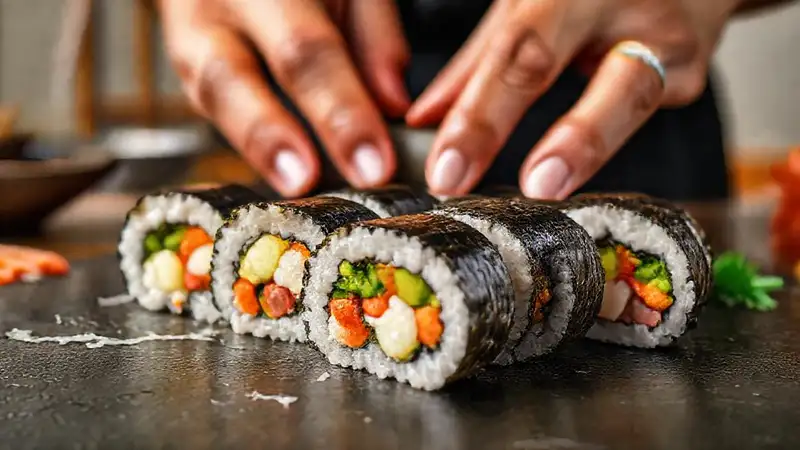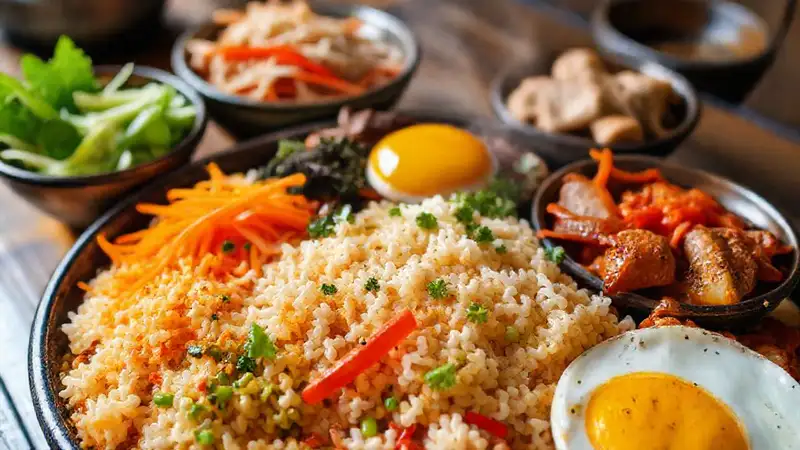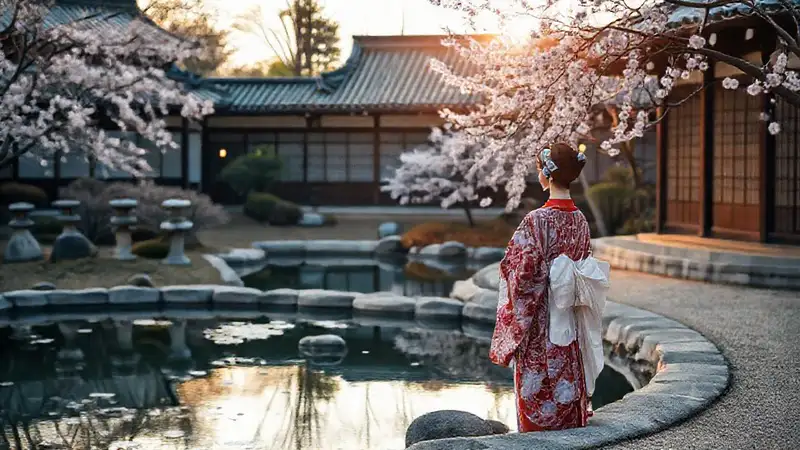Sushi, a cornerstone of Japanese cuisine, isn’t a monolithic entity. Over centuries, distinct regional variations have emerged, each with unique techniques, ingredients, and philosophies. While the fundamental principles of vinegared rice and fresh seafood remain constant, the way sushi is prepared and presented dramatically differs across Japan. Understanding these regional differences offers a deeper appreciation for the art form and its evolution. This exploration will focus on three prominent sushi styles: Hokkaido’s reliance on local bounty, Kansai’s exquisite attention to presentation, and Tokyo’s refined and skillful approach.
The perceived "authenticity" of sushi is often hotly debated, and rightly so. Each region boasts traditions and families who have honed their craft over generations. This article aims to move beyond simplistic classifications and instead delve into the nuances of each style, demonstrating how geographical factors, cultural influences, and historical developments have shaped their distinctive characteristics. We’ll be examining the materials used, the techniques employed, and ultimately, the aesthetic goals of each region’s sushi chefs. It’s a story of tradition and innovation intertwined.
Hokkaido Sushi: Celebrating the Sea
The Abundance of Ingredients
Hokkaido sushi, primarily associated with Otaru and Sapporo, is renowned for its commitment to showcasing the region’s incredibly abundant and fresh seafood. Unlike many other areas of Japan, Hokkaido’s proximity to the Sea of Okhotsk and the Pacific Ocean guarantees a year-round supply of unparalleled quality. This translates directly into the sushi—massive cuts of salmon, plump scallops, glistening uni (sea urchin), and a wide variety of local fish are staples. The emphasis is on utilizing the natural flavours and textures of these ingredients without heavy manipulation.
Hokkaido’s producers are famed for their sustainable practices, carefully managing the local fisheries. This also contributes to the consistently high quality. Often, sushi chefs in Hokkaido will simply plate the ingredients, allowing the natural beauty of the fish to shine through. The presentation isn't about elaborate styling; it's about demonstrating the incredible wealth of the ocean. The goal is to let the ingredients speak for themselves.
Minimalist Approach
The presentation style in Hokkaido tends towards a more minimalist approach. While skillful knife work is crucial – creating elegant cuts and ensuring the perfect presentation of each piece – the overall aesthetic is clean and understated. Rather than layering complex garnishes, Hokkaido chefs prioritize creating a harmonious arrangement of the seafood on a bed of rice, emphasizing the beauty of the individual components. This focus on the simple elegance of the seafood showcases the quality of the catch. It’s a testament to the philosophy that less is often more.
Kansai Sushi: A Symphony of Visuals

The Pursuit of Artistic Presentation
Kansai sushi, particularly in Osaka and Kyoto, is celebrated for its exceptionally elaborate and visually stunning presentations. This approach, often referred to as “koseki-zushi” (stone-slab sushi), is rooted in the aesthetic principles of wabi-sabi, which embraces imperfection and celebrates the natural beauty of materials. Every element – from the rice to the garnish – is meticulously placed to create a work of art. The goal is to create a moment of pleasure through visual stimulation.
The use of stone slabs is a key element. The sushi is constructed on a smooth, cool stone, providing a stark and elegant backdrop. The ingredients are carefully arranged to mimic natural landscapes or evoke specific seasonal themes. Often, miniature landscapes using vegetables, moss, and even small rocks are incorporated, adding layers of depth and complexity to the composition. Kansai sushi is not just a meal; it’s an immersive artistic experience.
Layering and Detail
Kansai sushi is characterized by a generous use of garnishes and a multi-layered presentation. Rather than simply placing the sushi on the rice, chefs build upon it, creating intricate arrangements. They utilize a wide variety of condiments, including sauces, pickles, and intricate vegetable arrangements. Each piece of sushi is treated as a miniature landscape, demonstrating a profound respect for the ingredients and a commitment to showcasing their beauty. The attention to detail is simply unparalleled.
Tokyo Sushi: Refinement and Technique
Mastering the Knife
Tokyo sushi, particularly in Ginza, is synonymous with meticulous technique and precise knife skills. The focus is less on elaborate presentation and more on the flawless execution of traditional methods, passed down through generations of sushi chefs. The itamae (sushi chef) develops an almost intuitive understanding of the fish, knowing exactly how to cut it to maximize its flavor and texture. Precision and control are paramount.
The preparation of sushi rice – shari – is equally critical. It’s meticulously seasoned and left to cool to precisely the right temperature, ensuring the perfect balance of sweetness and acidity. The skill of the chef is evident in the evenness of the rice grains and the consistent texture. The delicate balance of the rice is central to the overall experience.
Simple Elegance
Tokyo sushi's presentation is often characterized by its understated elegance. While not as lavish as Kansai sushi, the pieces are still beautifully arranged, highlighting the quality of the fish. The focus is on showcasing the chef’s skill and the freshness of the ingredients, rather than creating an elaborate spectacle. A small, carefully placed sprig of shiso leaf or a single, perfectly formed piece of ginger often serves as the only garnish. It’s a quiet, confident expression of skill.
Conclusion
The diversity of sushi styles across Japan reveals a fascinating interplay between regional ingredients, artistic sensibilities, and historical influences. From Hokkaido's embrace of the ocean’s bounty to Kansai’s dedication to visual artistry and Tokyo’s unwavering commitment to technique, each region’s approach reflects its unique character. Exploring these nuances encourages a deeper appreciation for this iconic Japanese dish and demonstrates that sushi is far more than just a simple meal; it's a reflection of Japanese culture.
Ultimately, understanding the regional variations of sushi allows us to appreciate the breadth and depth of Japanese culinary traditions. It’s a journey of discovery, rewarding those willing to look beyond the familiar and delve into the artistry and passion that lie at the heart of each style. The constant evolution and preservation of these traditions make sushi an endlessly captivating subject.
 How does the altitude of Oaxaca affect mezcal production
How does the altitude of Oaxaca affect mezcal production What regional variations exist within Gyudon across Japan
What regional variations exist within Gyudon across Japan How do you identify authentic Oaxaca mezcal from fakes
How do you identify authentic Oaxaca mezcal from fakes What are the traditional seasonings in Kansai sushi
What are the traditional seasonings in Kansai sushi How does Hokkaido's promotion influence tourism
How does Hokkaido's promotion influence tourism What’s the role of nori seaweed in maki rolls
What’s the role of nori seaweed in maki rolls How does Kansai sushi relate to local markets
How does Kansai sushi relate to local markets What are the regional differences in bibimbap toppings
What are the regional differences in bibimbap toppings
Deja una respuesta